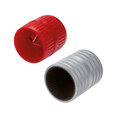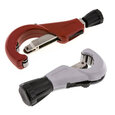How To Bend PVC Pipe
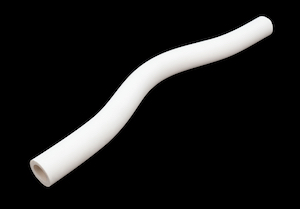
Figure 1: Bent PVC pipe
PVC (Polyvinyl chloride) pipes are inexpensive and easy to install. Some applications require PVC pipes to be bent at an angle or even in a complete circle. This article explores bending PVC pipes using bending tools and also a guide on the various techniques to bend PVC pipes without a pipe bender.
Table of contents
- Why bend a PVC pipe?
- How to bend PVC pipe using a pipe bender
- How to bend PVC pipe without bending tools
- FAQs
Check out our selection of pipe and tube processing tools!
Why bend PVC pipe?
Electrical conduit (pipes carrying electrical wires) and irrigation piping commonly use PVC pipes. PVC pipes need to be bent at specific angles at certain places to complete their path. There are three main methods to bend PVC pipes:
- Elbows and couplings: Elbows and couplings usually change the path of fluid flow direction in PVC piping. They are simple, easy to use, and apt for simple PVC pipe installations. However, these are not suitable for conduit pipes as it is difficult to pull wires and cables through them.
- Use heat: Applying heat to PVC softens the material, making it easy to bend. The pipe stays in the new position once it cools. However, heating inevitably weakens the pipe’s walls, meaning it cannot withstand the pressure it was designed for.
- Use a conduit bender: A conduit bender is an effective tool to bend PVC pipes at desired angles. The device is easy to use and provides precise bending angles.
The following sections discuss the various methods to bend PVC pipes using heat and conduit benders.
How to bend PVC pipe without bending tools
In the absence of PVC pipe benders, there are multiple options to try that can bend a PVC pipe perfectly. The various methods of using heat to bend a PVC pipe are discussed below.
Use a hair dryer (or heat gun)
- Use a marker to mark where the pipe will be bent. Also, mark two points approximately twenty centimeters (eight inches) on either side of the bend point. This constitutes the region to be heated.
- Place the PVC pipe on a supporting structure. Ensure that the bend point is in the middle of the supporting object.
- Turn on the hair dryer or heat gun and apply heat to the specified region. Hold the dryer approximately eight centimeters (three inches) from the pipe’s surface. Continuously move the hair dryer from side to side to heat the pipe around the marked spot.
- Gently apply pressure to the PVC pipe using the other hand to bend it in the desired direction.
The heat from the hair dryer is sufficient to bend the PVC pipe. But, heating the pipe directly can cause the pipe to collapse and kink, making it unusable. To avoid this, try the methods discussed below.
Use a bending spring
A bending spring is a strong, flexible spring inserted into or around a PVC pipe. The spring supports the pipe walls during bending.
- Attach a long thin wire to one end of the spring.
- Lower the spring into the PVC pipe to the bend point.
- Follow the steps using the hair dryer to bend the PVC pipe.
- Once done, pull out the spring and wait for the pipe to cool.
Use sand
- Using a funnel, pour sand into the PVC pipe up to a few inches past the PVC pipe.
- Close one end of the pipe with tape to prevent the sand from falling out.
- Follow the steps using the hair dryer to bend the PVC pipe.
- Pour out the sand and let the pipe cool.
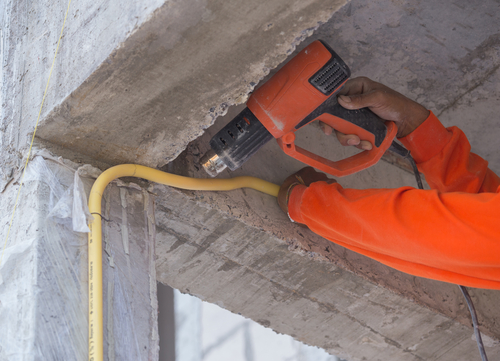
Figure 2: Using a heat gun to bend PVC pipe. A hairdryer can also be used to bend the PVC pipe.
Use oven/stove top
In the absence of a hair dryer, put sand in a vessel and heat it over an oven or stovetop. Sand holds onto heat for a long time. The sand transfers heat to the PVC pipe, making it flexible enough to bend. Also, sand fills the pipe, preventing its collapse while bending. Perform the following steps to bend a PVC pipe using sand and a stovetop.
- Mark the point where the PVC pipe needs to be bent.
- Use a funnel to fill the pipe with sand up to 5-8 centimeters (2-3 inches) above the marked point.
- Transfer the sand into a heat-resistant bowl.
- Place the bowl into a stovetop or an oven. Set the heat to approximately 220 Celsius (430 Fahrenheit). Keep stirring the sand until the heat transfers evenly all over the sand.
- Pour the heated sand into the pipe and let it sit for around one or two minutes.
- Bend the pipe gently until the desired shape is attained.
- Pour out the sand from the pipe. Wait for the pipe to cool until it’s ready for use.
Note: PVC can easily catch fire and produce harmful gasses. The fire may even be difficult to put out. Hence, it is advisable to heat the PVC pipe outside.
Use boiling water
The temperature of boiling water can make the PVC pipe flexible enough to bend. Perform the following steps to bend the pipe using boiling water.
- Boil water in a kettle until steam starts coming out.
- Put one end of the pipe in or around the kettle’s nozzle so the steam goes directly into the pipe.
- Remove the pipe from the kettle after heating, and keep the pipe aside for around five minutes. Then bend the pipe into the desired shape.
- The pipe is ready for use once it cools down.
How to bend PVC pipe using a pipe bender
A conduit bender delivers uniform force and is convenient for bending PVC pipe. Perform the following steps to bend a PVC pipe using a conduit bender:
- Use a marker pen to mark the point on the pipe to be bent.
- Connect the pipe to the pipe bender.
- If possible, secure the pipe on the floor to prevent slipping.
- The conduit bender’s clamping hook should go around the pipe.
- Step on the bender’s heel, and use the handle to adjust the angle and strength of bending.
Read our article on manual pipe benders for more detailed information on the design and operation of various types of pipe benders.
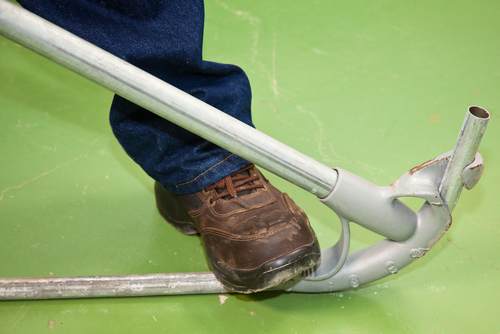
Figure 3: Using a conduit bender
Tips
- Look for any color changes while heating the PVC pipe. A light brown color is a normal benchmark, and anything beyond that means that the heat is being left in one place for too long.
- As a PVC pipe is heated, it turns soft to the point that picking up one end of the pipe will not move the other end. Also, try to apply pressure with a fingertip and check if it dents the surface and springs back when the pressure is removed. The pipe is ready to bend at this point.
- Wear thick cotton gloves to protect the hands from being burned.
- Use simple molds to assist in shaping and improving accuracy.
FAQs
How do you bend a PVC pipe without a bender?
Apply heat using a heating torch or hair dryer to soften the pipe material. Then bend the pipe into the desired shape and angle.
Does heating PVC pipe weaken the material?
Yes, heating inevitably weakens the pipe walls, meaning they cannot withstand the pressure it was designed for.





